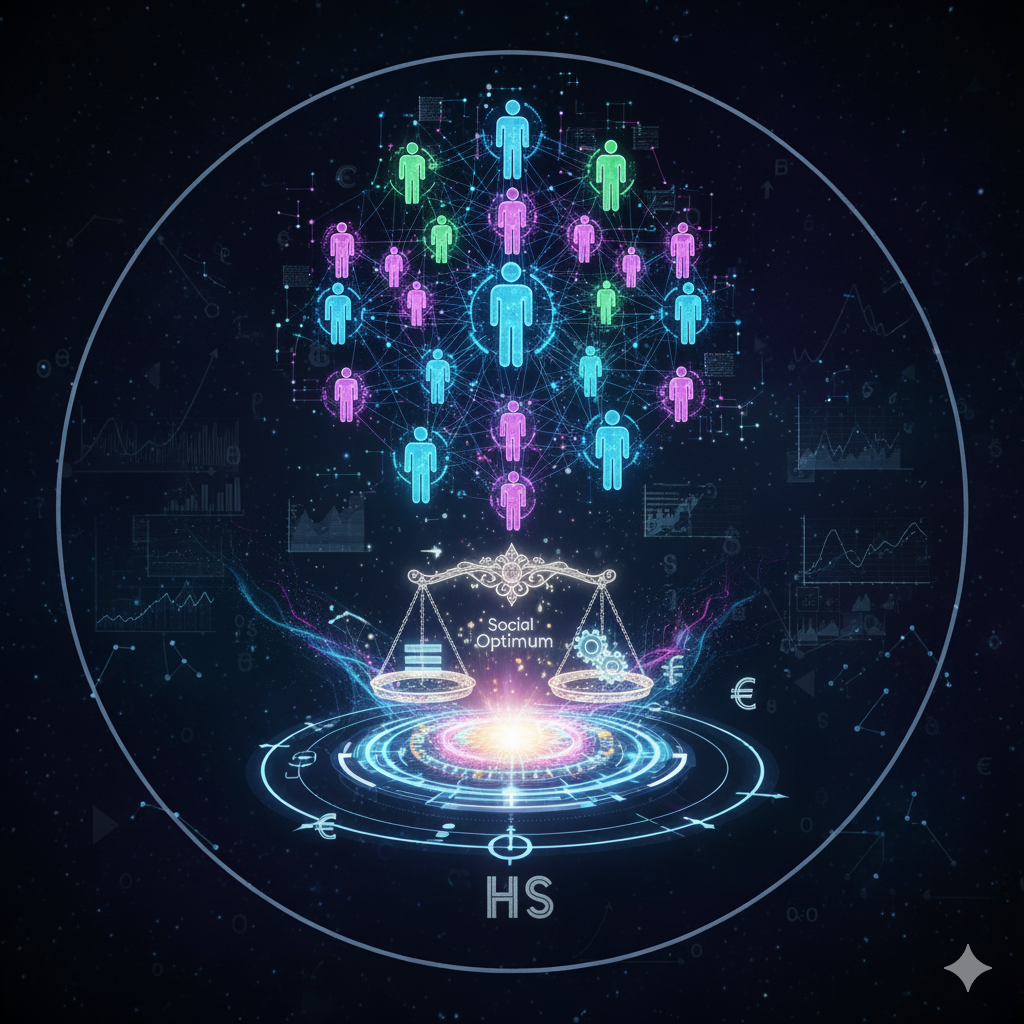Introduction
Rural India has always been the backbone of the country’s economy, with over 65% of the population still living in villages and depending heavily on agriculture and allied sectors for survival. However, rural livelihoods have historically been constrained by issues such as low agricultural productivity, lack of alternative employment opportunities, poor access to markets, financial exclusion, and vulnerability to poverty. Recognizing the need to strengthen rural livelihoods and empower marginalized communities, the Government of India launched the National Rural Livelihood Mission (NRLM) in 2011, later renamed as Deendayal Antyodaya Yojana – National Rural Livelihoods Mission (DAY-NRLM).
The mission aimed to reduce poverty through the promotion of diversified and sustainable livelihood opportunities, while also building strong grassroots institutions of the poor. Over a decade later, NRLM has emerged as one of the most ambitious poverty alleviation programs in the world, targeting nearly 100 million rural households. Its emphasis on women’s collectives, financial inclusion, capacity building, and entrepreneurship distinguishes it from earlier poverty eradication schemes. Yet, despite impressive achievements, NRLM continues to face significant challenges in ensuring sustainable livelihood security for all rural poor.
This essay evaluates the role of NRLM in providing livelihood opportunities, analyzing its objectives, design, successes, limitations, and the way forward.
Historical Background of Rural Livelihood Programs in India
Before NRLM, India experimented with multiple poverty alleviation schemes. The Integrated Rural Development Programme (IRDP) of 1978 attempted to provide credit-linked subsidies to poor households, but it was criticized for poor targeting, leakages, and unsustainable income generation. Later, self-employment schemes like Swarnjayanti Gram Swarozgar Yojana (SGSY) (1999) sought to promote self-help groups (SHGs), but its impact remained fragmented due to lack of capacity building and institutional support.
These experiences demonstrated that one-time asset provision or credit access was insufficient to lift people out of poverty. What was required was a holistic, demand-driven, and participatory approach that combined financial inclusion, skills, market linkages, and community empowerment. In this context, NRLM was launched in 2011, with the support of the World Bank, to create a robust institutional platform for the rural poor.
Objectives and Design of NRLM
The mission is guided by the vision of “mobilizing all rural poor households into self-managed institutions” and enabling them to access financial services, livelihood opportunities, and social entitlements. Its objectives include:
- Reducing poverty by promoting diversified and sustainable livelihoods.
- Mobilizing rural poor, especially women, into self-help groups and federations.
- Facilitating access to affordable credit and financial literacy.
- Building skills and capacity for entrepreneurship and wage employment.
- Strengthening social capital and promoting social inclusion.
The design of NRLM rests on four pillars:
- Universal Social Mobilization – Bringing all poor households, especially women, into SHGs and federations.
- Financial Inclusion – Providing affordable credit, linking SHGs to banks, and promoting financial literacy.
- Sustainable Livelihoods – Enhancing farm-based, non-farm, and wage-based livelihoods through skill development and market linkages.
- Convergence and Social Development – Ensuring that SHGs have access to entitlements such as health, nutrition, education, and pensions.
The program follows a participatory, demand-driven, and flexible approach. It emphasizes long-term handholding support, capacity building, and empowerment rather than short-term subsidies. Importantly, it adopts a women-centric strategy, with nearly all SHGs comprising women members, thereby promoting gender empowerment.
Implementation and Institutional Framework
NRLM is implemented by the Ministry of Rural Development in collaboration with state rural livelihood missions (SRLMs). The program works through a three-tier institutional structure:
- Self-Help Groups (SHGs) at the village level, consisting of 10–15 members, primarily women.
- Village Organizations (VOs) – federations of SHGs at the village level that provide support in credit management, social mobilization, and monitoring.
- Cluster-Level Federations (CLFs) – higher-level federations that ensure sustainability, capacity building, and linkages with markets and government institutions.
In addition to institutional building, NRLM emphasizes capacity building, skill development, and livelihood promotion. Partnerships are encouraged with NGOs, community resource persons, private enterprises, and banks. Programs like the Start-up Village Entrepreneurship Programme (SVEP), Mahila Kisan Sashaktikaran Pariyojana (MKSP), and Rural Skills Training under Deen Dayal Upadhyaya Grameen Kaushalya Yojana (DDU-GKY) form critical sub-components.
Achievements of NRLM in Providing Livelihood
Women’s Empowerment and Social Capital
One of the most significant contributions of NRLM has been the empowerment of rural women through SHGs. Over 8 crore women have been mobilized into more than 70 lakh SHGs across India. These collectives not only provide financial security but also create platforms for women to participate in decision-making, demand entitlements, and challenge patriarchal norms. The program has enhanced women’s mobility, confidence, and bargaining power within households and communities.
Financial Inclusion
NRLM has facilitated unprecedented financial inclusion. SHGs are now linked to formal banking systems, accessing affordable credit without dependence on moneylenders. As of 2022, cumulative bank credit disbursed to SHGs exceeded ₹4 lakh crore. Many SHGs have developed strong repayment records, making them reliable borrowers. Financial literacy initiatives have improved rural households’ ability to manage savings, insurance, and digital transactions.
Livelihood Diversification
Through its various sub-missions, NRLM has promoted diverse livelihood options. Farm-based interventions have introduced improved seeds, organic farming, soil health management, and irrigation practices. Programs like MKSP have empowered women farmers, who were historically invisible in agricultural policy. Non-farm interventions under SVEP and DDU-GKY have promoted rural enterprises, handicrafts, small businesses, and skill-based wage employment.
Poverty Reduction and Resilience
Evidence from states like Andhra Pradesh, Kerala, and Bihar indicates that NRLM has reduced poverty and enhanced resilience. Households engaged in SHGs report higher income, increased consumption, and better coping mechanisms against shocks such as health emergencies or natural disasters. During the COVID-19 pandemic, SHGs played a crucial role in producing masks, sanitizers, running community kitchens, and maintaining local supply chains.
Strengthening Governance and Convergence
NRLM has fostered participatory governance by involving communities in decision-making. SHG federations have become platforms for demanding accountability from local institutions, ensuring better delivery of services like health, nutrition, and education. The program has converged with schemes such as MGNREGA, National Health Mission, and PDS, thereby addressing multiple dimensions of poverty.
Limitations and Challenges
Uneven Implementation Across States
The success of NRLM varies widely across states. States like Kerala (Kudumbashree), Andhra Pradesh, and Tamil Nadu have demonstrated strong outcomes due to proactive state missions and community-based approaches. In contrast, states with weaker administrative capacity or political commitment lag behind, resulting in uneven benefits.
Quality of SHGs and Sustainability
While the number of SHGs has increased dramatically, the quality of groups remains uneven. Some SHGs face issues of weak cohesion, irregular meetings, lack of leadership, and poor record-keeping. Sustaining groups beyond initial handholding remains a challenge, particularly in poorer states.
Credit Constraints and Over-Indebtedness
Although access to credit has improved, many SHGs still struggle with inadequate or delayed bank loans. In some cases, multiple borrowing has led to over-indebtedness, raising concerns about financial sustainability. Dependence on subsidized loans risks undermining credit discipline.
Limited Impact on Structural Issues
NRLM focuses largely on microcredit and small enterprises. However, it cannot fully address structural problems like landlessness, poor agricultural infrastructure, lack of large-scale non-farm industries, and limited rural markets. Without complementary reforms in these areas, livelihood gains remain modest.
Inadequate Market Linkages
Many rural enterprises promoted under NRLM face difficulties in accessing wider markets, competing with established players, and scaling up operations. Lack of branding, marketing, and value addition often restricts SHGs to low-value activities.
Gender and Social Inclusion Gaps
Though NRLM is women-centric, challenges remain in ensuring meaningful empowerment. In some contexts, women are included in SHGs but male household members continue to control decision-making. Moreover, the most marginalized groups—such as landless laborers, tribal communities, and persons with disabilities—may still find it hard to benefit equally from SHGs.
Critical Evaluation
NRLM marks a major paradigm shift from earlier poverty alleviation programs. Its emphasis on community-based institutions, women’s empowerment, and financial inclusion is innovative and has shown tangible results. Compared to the top-down, subsidy-driven models of the past, NRLM’s participatory and capacity-building approach is more sustainable.
However, its success is relative rather than absolute. It has improved access to credit and promoted microenterprises, but the quality and scale of livelihoods generated remain limited. Rural poverty is multidimensional, involving not just income but also education, health, land access, and social inequality. NRLM alone cannot address these structural determinants. Its true potential lies in being a platform for convergence—linking rural households with multiple government schemes, financial institutions, and markets.
Another critical aspect is that while NRLM has empowered women socially, economic empowerment remains partial. Many SHG enterprises operate at subsistence levels, with limited profits. Without strong market linkages, digital literacy, and access to technology, these enterprises risk stagnation.
The Way Forward
For NRLM to achieve its full potential, several measures are essential:
- Strengthening the quality and sustainability of SHGs through long-term capacity building and leadership training.
- Ensuring equitable participation of marginalized groups such as tribals, Dalits, and landless households.
- Expanding access to digital platforms, e-commerce, and value-chain development to enhance market linkages.
- Integrating NRLM more strongly with agriculture, agro-processing, and rural industrialization to create scalable livelihood opportunities.
- Encouraging partnerships with private enterprises, cooperatives, and social entrepreneurs for innovation and investment.
- Monitoring outcomes not just in terms of credit flow but also in terms of income enhancement, resilience, and empowerment.
Conclusion
The National Rural Livelihood Mission represents a bold and ambitious attempt to transform rural livelihoods in India by building grassroots institutions of the poor. It has mobilized millions of rural women, expanded financial inclusion, diversified livelihoods, and strengthened social capital. Its role in poverty reduction and resilience-building, particularly during crises like the COVID-19 pandemic, is noteworthy.
Yet, NRLM is not a panacea. Its impact remains uneven, with challenges of sustainability, structural constraints, and market integration persisting. To make rural livelihoods truly vibrant, NRLM must be complemented with broader reforms in agriculture, rural industries, infrastructure, and education. The program’s long-term success will depend on its ability to not only provide credit and microenterprises but also to enable rural communities to move into higher-value, sustainable, and inclusive economic activities.
Thus, while NRLM has laid a strong foundation for rural livelihood transformation, the task of realizing its full potential remains a continuous and evolving journey.




